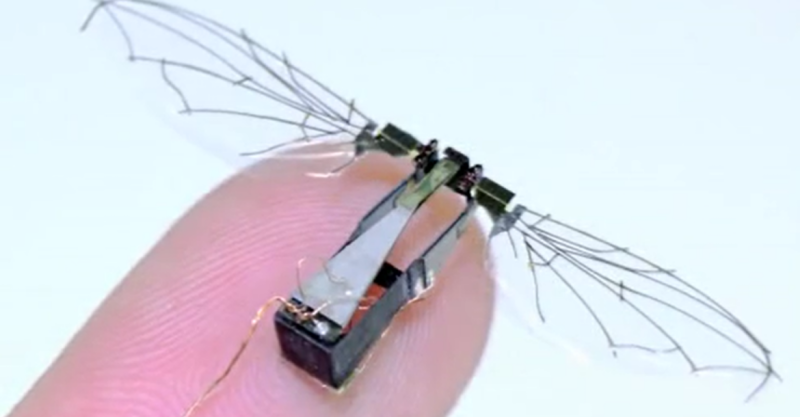For the majority of the 21st century AFRL has been designing mini-robotic aircraft to mimic characteristics of insects and birds. Using biomimetics, the application of engineering, chemistry and biology to the synthesis of materials, engineers have created synthetic systems to function and achieve insect-like maneuverability.
For the engineers, however, challenges are inherent when manipulating man-made mechanisms to perform instinctive movements of flying insects and birds created by nature. One such challenge is designing an aircraft capable of six-degrees-of-freedom flight with only two actuators. According to patents filed by David Doman, Michael Oppenheimer, Isaac Weintraub, and David Sigthorsson, this challenge may have met its match.
The United States Patent and Trademark Office approved Doman and Oppenheimer’s patent application for “Method for Shaping Wing Velocity Profiles for Control of Flapping Wing Micro Air Vehicles” (USPTO Number 8,700,233) in 2014; and Oppenheimer, Weintraub, Sigthorsson, and Doman’s application for “Methods and Apparatus to Achieve Independent Six-Degree Control of Flapping Wing Micro Air Vehicle” (USPTO Number 9,428,269) in 2016. These patents and its resulting invention have now landed on the doorstep of a small business in Los Angeles, California, named Airion Health, LLC.
In January, the Department of the Air Force signed a Non-Exclusive Patent License Agreement (PLA) with Airion Health for the licensing of this Government-owned invention, which both parties agree will best serve the public interest once it is developed for practical application and made available. Airion Health specializes in solving complex problems for private companies, as well as the United States military, and has agreed to develop, manufacture, and market the invention. The terms outlined in the PLA dictate the company shall produce a workable prototype within 15 months.
The device, as detailed in the USPTO Number 8,700,233 filing, would enable a biomimetic micro-robotic aircraft to perform insect-like maneuvers with two physical actuators, while utilizing minimal computer processing power. Controllable forces would be generated by the wings based on position and velocity profiles, resulting in time-varying wing upstrokes and downstrokes, which, at times, may be asymmetrical.
The continuous process of updating the position and velocity, along with user-supplied inputs with a remote controller, will enable flapping wing MAVs to achieve the desired flight dynamics. Practical applications after successful implementation of the invention include, but not limited to, in-the-open surveillance, aerial swarm operations, and battlefield situational awareness.
The pathway to Airion Health’s PLA with the Air Force passed through the Office of Research and Technology Applications (ORTA) at Wright-Patterson Air Force Base in Dayton, Ohio. The ORTA is responsible for developing collaborative interactions with industry, academia, and other government entities through an Air Force program called Technology Transfer and Transition. Led by Joshua Laravie, the Technology Transfer Specialist and Domestic Alliance Program Manager for AFRL’s Aerospace Systems Directorate, the office is overseeing all communications, reports, and notices required from the Air Force for the PLA.
“We were excited to license our technology to a small business that was building strategic relationships in the drone industry,” says Laravie. “[We] are looking forward to supporting their efforts to commercialize an AF technology.”
No person in AFRL claims to be Superman, but an electronic flying bird resembles something you would have read about in a 1970’s comic book; however, if featured in a modern-day graphic novel, the MAV would be recast as a reality. So, whether you are out bird watching or watching out for birds, keep in mind that bird may be out watching you!
Patent License Agreements are offered through the Air Force Research Laboratory’s Technology Transfer and Transition (T3) program office, enabling inventions developed and patented by Department of Defense laboratories to be transferred to the private sector for full productive use. A comprehensive suite of T3 mechanisms for partnering with industry and academia are offered through the office.
Source: Press Release

